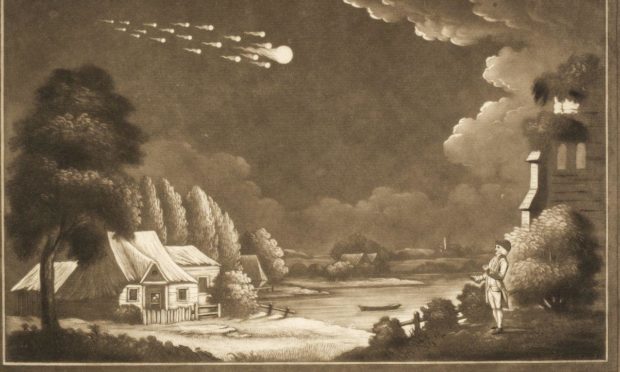How many comets can you name? I would be struggling to make three – Halley’s (of course), then that showstopper Hale-Bopp that flashed over in 1997. And Shoemaker-what’s-its-name.
Meteors are different. While comets are bodies of ice, rock and dust that orbit the sun, meteors are rocks which enter the earth’s atmosphere and either vaporise or land with a thud.
Three weeks ago, Dominic Winter Auctions in Gloucestershire, the renowned specialists in printed works, sold a rare mezzotint depicting the great meteor seen over Britain on August 18, 1783.
The full and mighty title
To give the print its full and mighty title, “this was Henry Robinson’s ‘Accurate Representation of the Meteor which was seen on on Augt. 18th 1783. At first it appeared as one Ball of Fire, but in a few Seconds, broke into many small ones. Its Course was from N.W. to S.E. – This extraordinary Phaenomenon was of that Species of Meteor which the great Phisiologist Dr. Woodward and others call the Draco volans or Flying Dragon. – The above View was taken at Winthorpe near Newark upon Trent, by Henry Robinson, Schoolmaster. – and Published by him as the Act directs, 14 Octr. 1783.”
Still one of the most spectacular ever seen
The great meteor of 1783 lit up the sky and still ranks among the brightest and most spectacular of such objects ever recorded. It was also responsible for some of the earliest and most accurate representations of meteors.
The uncoloured print, laid on paper, measured 8 x 11 inches and recorded the ‘Flying Dragon’ over Nottinghamshire.
Dominic Winter could trace only three institutional copies, one each in the British Library, British Museum, and the Wellcome Collection.
It sold for a five-times estimate £2000.










